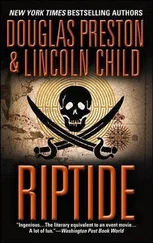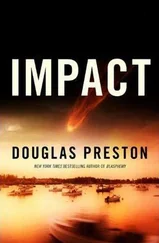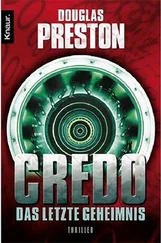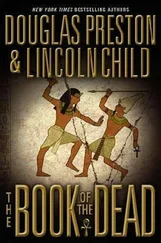2 Glock 9mms with extra clips
KA-Bar knife
Leatherman MUT Tactical
$300,000 in remaining cash
Compass
GPS with miniature solar panel
Flashlight
Binoculars
Burner phone
Crank-operated radio
Various passports
Mylar-coated space blanket
Bivvy bag
Ferrocerium fire striker
Enhanced first-aid kit
Water purification tablets
MREs
Fishing line and hook
Signal mirror
LED light with strobe
Needle and thread
“550” parachute cord
Camp stove with LPG fuel
With these supplies, he could survive a week or more in even this harsh environment. And with the extra petrol, the range of his vehicle was over a thousand miles. Diogenes was not going to escape him. Proctor was going to find him. And he was going to get answers to his questions — every single one.
In the blazing inferno of the Kalahari, Proctor stopped yet again to consult his map. Despite his long experience in desert ops, he was seriously taken aback by the vastness of this place. It wasn’t lifeless, exactly; he had passed a number of game animals along the way, including oryx, wildebeest, and a family of giraffes. There was bunch grass, brush, and even the occasional tree. What unnerved him was the endless immensity of it: infinity made visible.
He stepped out of the vehicle and unfurled the map on the burning ground, weighing down the corners with stones. There wasn’t a breath of wind, and the air around him trembled in the heat. He took out his GPS, turned it on, laid it upon the map, then watched while it slowly acquired satellites and gave him his location. He found it on the map, pondered what it meant.
New Xade was almost 150 miles behind him, and before lay another 250 miles of desert. But he knew he was on the right track — and this time, it hadn’t taken long at all to confirm it. Diogenes’s Land Rover had roared through New Xade at high speed, an event the entire village had noted. At the far end of town, where the dirt road finally petered out, the tire tracks remained sharp and clear. As he continued the pursuit, even with his occasional stops to consult the map, he seemed to be gaining on this target. He assumed this was because Diogenes was carrying a heavy, refrigerated coffin that, no doubt, impacted the performance and handling of the Land Rover.
Where the dirt road petered out, Diogenes’s tracks had continued over wandering cattle paths, game trails, and a series of bone-dry riverbeds before finally going overland. The sandy desert floor captured a clear tire track, much helped by the lack of wind and the slanting morning light. Diogenes’s vehicle had made a slow arc to the northeast, heading, as Proctor suspected, into the very heart of the Kalahari. They had come within the official boundary of the vast Kalahari Game Reserve, but this spot was far from where the safaris operated, the land being flat, arid, and without variety.
Now, looking at the map, he began to see where Diogenes might be headed: a place marked on his map as Deception Valley. It was indicated as a long, uncertain, shallow gorge with a dry riverbed at its center, ending in a place called Deception Pan, a huge dead lake. What the “deception” was, and what the place looked like in reality, Proctor could only guess.
His assumption was that Diogenes had killed Constance out of revenge. But then, why the refrigerated coffin? Why this incredibly remote place? Was it possible Constance had resisted and been accidentally killed in a struggle? The latter seemed possible, given her hatred of Diogenes and her ungovernable rages. And there had been that talk, back at Akjoujt airport, of an unknown delay caused by one of the passengers.
Deception Valley lay only twenty more miles to the northeast. The sun was now high in the horizon. Proctor wasn’t bothered by this; the A/C in the Land Cruiser had been running well.
He got back into the Land Cruiser, put the vehicle in gear, and set off, following the tracks slowly and carefully. In an hour he saw a streak of acacia trees silhouetted along the horizon. As he approached them, he spied a low, wandering swale in the landscape: Deception Valley. The tracks entered the riverbed and continued on the sand, now sharp and distinct in the early-afternoon sun. He accelerated abruptly, going as fast as he dared, following the tracks, the vehicle swaying and fishtailing.
The riverbed expanded — and suddenly he was on the rock-hard clay surface of a dry lakebed: the Deception Pan. It was as vacant and level as a hundred-mile parking lot.
The tire tracks completely vanished.
With a curse, Proctor slammed on the brakes and got out. He examined the surface and could see, just barely, where Diogenes’s vehicle had passed. But on the hard lakebed the track had suddenly grown almost invisible, and would now necessitate great care, skill, and time in tracking.
All too obviously, this had been carefully planned.
He got back in the Land Cruiser and began inching forward, peering intently through the windscreen at the lakebed. He could — just barely — see the faint marks of the tires, but he could go no faster than five miles an hour, and more than once he had to stop and reconnoiter. The vehicle had ceased going in a straight line; sometimes it would zigzag, or make a sharp turn, or even loop around and cross its own tracks.
Shortly before dark, Proctor stopped again to consult the map. Once again, he spread it out and took out his GPS. He discovered he was now in the center of the Deception Pan; his GPS showed Diogenes had led him this way and that, in a maddening set of circles and zigzags.
Suddenly he heard the engine of his Land Cruiser — which he had left running — hiccup; hiccup again; and then die.
He felt a sudden, sharp apprehension. The engine had not overheated; he had been watching it like a hawk and the air was already cooling fast. He got into the vehicle and turned the key.
The solenoid clicked but nothing else.
Now he felt real alarm. He told himself to calm down; with all the heat and dust, the battery terminals probably needed cleaning.
He popped the hood and peered inside; the terminals were dusty but not overly so. He quickly cleaned the terminals, connectors, and engine ground. He checked the battery with a brief short using a screwdriver and got a massive spark. The battery was still good.
Still, the Land Cruiser would not start.
With the vehicle in neutral, he used the screwdriver to bypass the starter relay solenoid and tested the starter.
No good.
This made no sense. How the hell had the starter died at just the same time as the engine?
He shone the light around the engine compartment. Everything looked normal, no leaks or loose wires or signs of sabotage.
Sabotage. Proctor glanced at his watch. The vehicle had died at 6 PM exactly. Coincidence? Probably: but an unnerving one nonetheless.
The sudden dying of the engine would have an explanation. Proctor knew cars. He would find it.
* * *
Four hours later, exhausted and maddened, Proctor sat down next to the vehicle, leaned against a wheel, calmed himself, and took stock. His thorough and minute inspection had convinced him of one thing: somehow, some way, the vehicle’s main computer had been reprogrammed. It had been set to render the Land Cruiser absolutely inoperable at six PM — just as night fell. It was the one thing he had no chance of fixing. Not only would it require a sophisticated diagnostic computer to identify, it would also need the source code for the engine, which was proprietary and a closely guarded secret of the parent company.
Proctor considered his predicament. He had undergone a revelation of sorts. There was now no doubt that all of this had been carefully orchestrated: an absurdly complex plan to lure him to the ends of the earth — to the most godforsaken place on the planet… and strand him there.
Читать дальше











